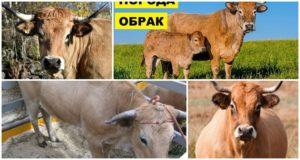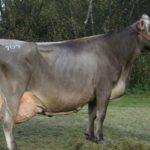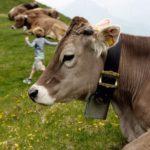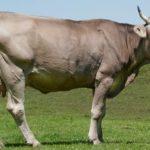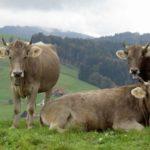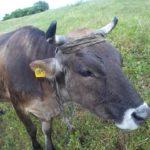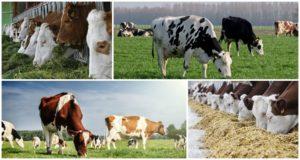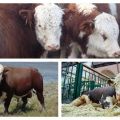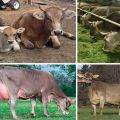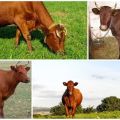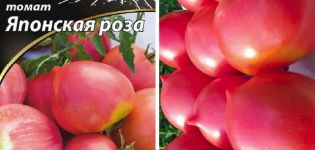Description and characteristics of Swedish cows, features of the content
Scandinavian breeds of cows are a kind of benchmark in beef and dairy farming. Many valuable consumer qualities of varieties have spread to other breeds by crossing. Consider the description and characteristics of the Swedish breed of cows, its features, the main advantages and disadvantages, how to care for animals, their diet and breeding rules.
Origin story
The breed was bred in the central and southeastern part of the country, Shorthorn and Scottish Ayshire cows were chosen for the basis. Breeding began in the 19th century, the breed was registered in 1927.
Scope of distribution
The breed occupies one of the leading places in animal husbandry in Sweden, has become widespread in countries whose climate is similar to that of this country. Cows are often used for crossbreeding with cattle of other breeds in order to improve the valuable agricultural qualities of the offspring.
Description, characteristics and productivity
Animals of red and white color, medium size (weight 550 kg), harmonious constitution. The height at the withers of bulls is 140-145 cm, heifers - 132-138 cm. The meat yield during slaughter is 56-60%. Calves are born with an average weight of 37 kg. Cows have strong legs, proportional udders. The Swedish breed is distinguished by its milk yield, 8.7 thousand liters of milk can be obtained from an individual per year. Calving in queens is easy, without complications. Bulls and cows are distinguished by strong immunity and endurance.
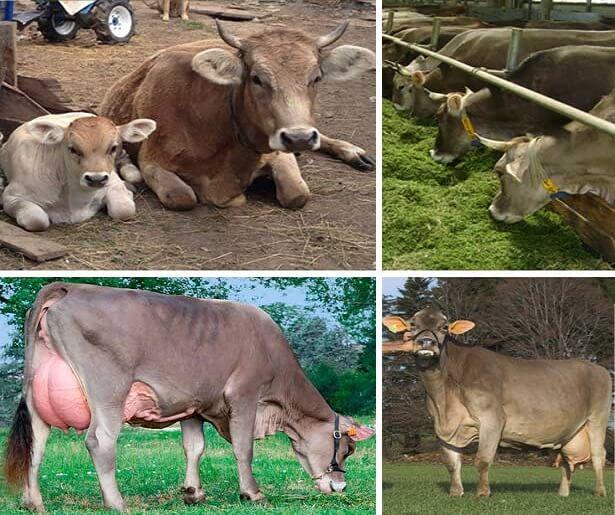
Main pros and cons
Swedish red and white milk makes excellent hard cheeses and dietetic dairy products.
How to maintain and care
The dwelling of the cows should be warm, dry, especially in winter. In summer, on the contrary, it is cool, since when it is hot, the appetite of animals decreases, and milk yield also decreases. Stalls should be large enough to allow the cows to move freely and lie down to rest when needed.
Stalls, feeders and drinkers must be kept clean. It is advisable to clean them every day, replace the bedding. You also need to clean the cow itself, in the winter you clean the skin with a brush, in the summer you can bathe outside with warm water. Bathing and massage have a good effect on the skin of the animal, normalize metabolism and emotional state.As a result, productivity increases, milk yield and fat content increase.
At the beginning of the grazing season, cows' hooves are trimmed and trimmed so that the animal does not feel discomfort when walking. In summer, you need to treat the barn from flies, which, causing disturbance to the cows, also affect the decrease in milk yield.
Diet
In winter, an animal weighing 550 kg is given 6-8 kg of hay, 2 kg of straw. The hay should contain legumes. The diet should contain succulent feed, for every 100 kg of body weight there should be 6-8 kg. In order for them to be better absorbed, there should be 2-3 types of them in the feed. High-yielding queens of the Swedish breed need to be fed up to 50 kg of juicy feed per day. Approximate diet: 30 kg of fodder beets and up to 15 kg of sugar. In the absence of sugar beets, they can be replaced with potatoes. Cows will eat carrots with pleasure and benefit (2-8 kg per head per day).
In winter, silage is fed (6-8 kg per 100 kg of weight). Concentrated feed is given, calculating their amount from the volume of milk yield. For 100 kg of animal weight, 300-350 g of product are fed with a milk yield of more than 25 liters. Food waste can be given to animals. Chalk and salt should always be used as a top dressing.
Feeding Swedish cows should be on a schedule so that the animals get used to the feed at the same time. Feeding frequency - 3 times a day. You need to distribute feed correctly: first concentrates, then juicy, and at the end roughage. The entire volume must be divided into portions and fed only after the next part has been eaten. New products should not be introduced into the diet immediately, but gradually, so that the animal's digestive system has time to get used to the unusual product.
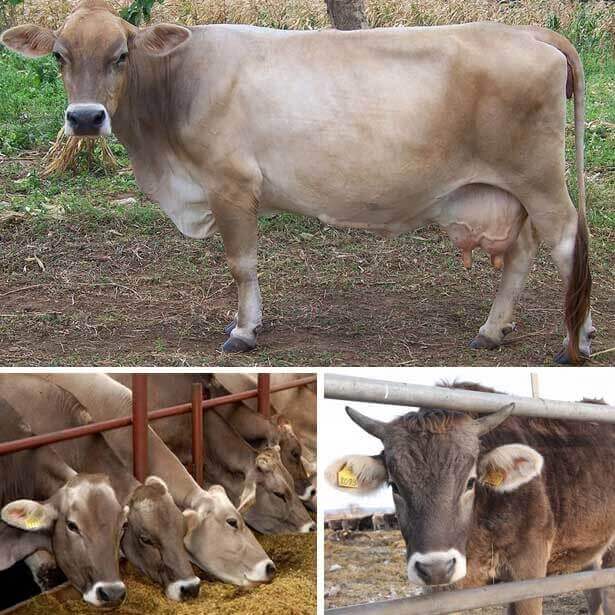
In the summer, animals can graze in the pastures, feeding on fresh grass. Each individual is able to eat up to 70-80 kg of grass per day. Grazing time with breaks should not be less than 12 hours.
If the pasture is scarce, cows need to be fed with grass in stalls or given concentrates (150 g per 1 liter of dairy products), grain.
All Swedish cows should have fresh water in their drinking bowls throughout the year. It can be given from buckets, but it is better to equip the barn with automatic drinkers. The quality of the water must be respected, you need to drink only clean, fresh water. You need to take it from a tap, a well. In summer, in the heat, the animal can drink up to 40 liters per day. It is necessary to give as much as the animal can drink, since water stimulates milk production, which is why milk yield increases. The temperature of the liquid should be comfortable for the animal, not cold or hot.
Breeding rules
The profitability of livestock farming depends on the replenishment of the cow population. This is usually due to the birth of calves. Cows can give birth when they are 18-22 months old. Insemination is carried out naturally or artificially. To prepare females for insemination, pregnancy and the birth of calves, they are provided with adequate nutrition, walk every day, create a comfortable microclimate in the barn. Pregnant uterus should be in a calm state, stressful situations must be excluded.
Calving for Swedish cows is easy and without complications. Human help is not required, you need to make sure that the cow licks the baby, and he drinks the colostrum. The natural transfer of immune bodies from the mother to the calf will activate its immunity. The calves are kept separate from their mothers, bringing them for feeding 3 times a day. Grown up animals are grazed on pasture together with the herd.
On farms, you can get purebred animals if you happen to be purebred queens and bulls and crossbreeds with representatives of other breeds. Pedigree individuals inherit the characteristics of the breed; hybrids show an acceleration of growth, productivity, and vitality.
Health
The health of cattle directly affects the productivity, both meat and dairy. A healthy animal must be provided with the necessary living space, must receive the required amount of food, move freely around the stall, and see its relatives. Take a walk in the fresh air, move, rest the allotted time.
Swedish cows rarely get sick when keeping up with the rules. Infectious diseases, injuries, metabolic diseases and internal organs appear due to improper feeding and maintenance. Animals get sick if they live in a damp, dirty, dark, humid room. After identifying the disease, sick individuals should be treated immediately.
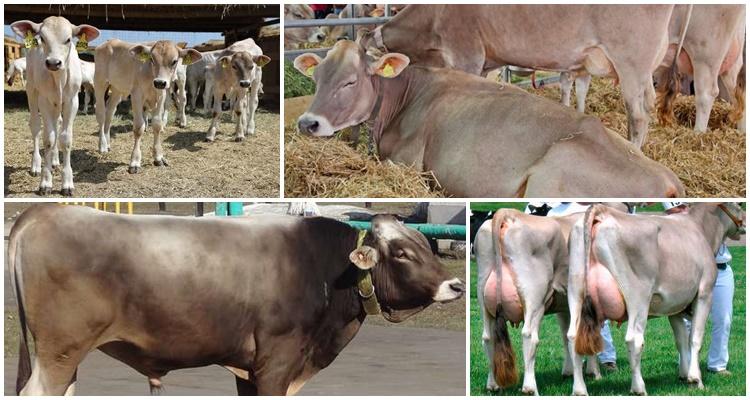
Growing prospects
Production of meat and milk is considered a promising direction in animal husbandry. The Swedish red and white breed meets the requirements of meat and dairy farming. Bulls and cows are distinguished by early maturity, fertility, and health. The queens give healthy numerous offspring, a lot of fatty milk is fed from them. The volume of average annual milk yield makes it possible to grow cattle profitable and make a profit.
The meat of the Swedish breed is tasty and nutritious, animals can be bred for meat. In it, fiber and fat are in an optimal ratio. The digestibility of meat is 95%. Gobies can be slaughtered as early as 8-10 months, until this age they actively grow, then the growth rate decreases. For breeding, you need to choose from the livestock the best individuals for all indicators.
The Swedish red and white cattle breed is considered promising for farm and domestic livestock breeding. Cows successfully combine the valuable traits of dairy and beef cattle. If you organize the cultivation of cattle according to the rules, it will be possible to bring the farm to a high level of income.
